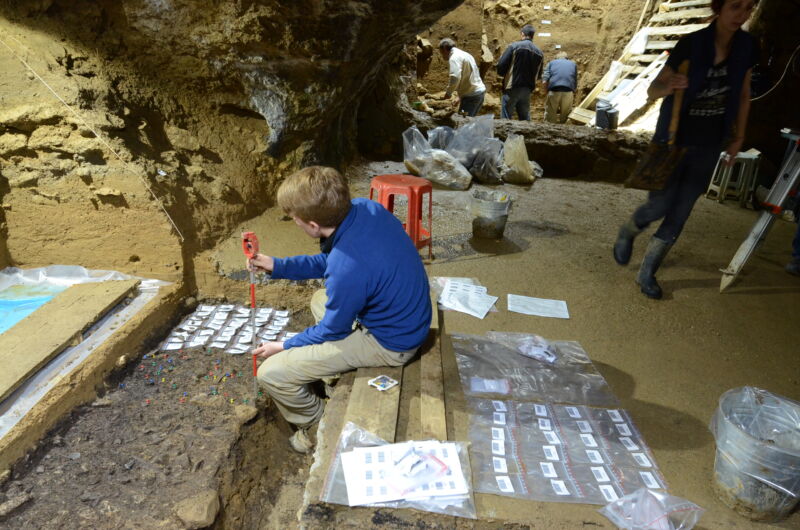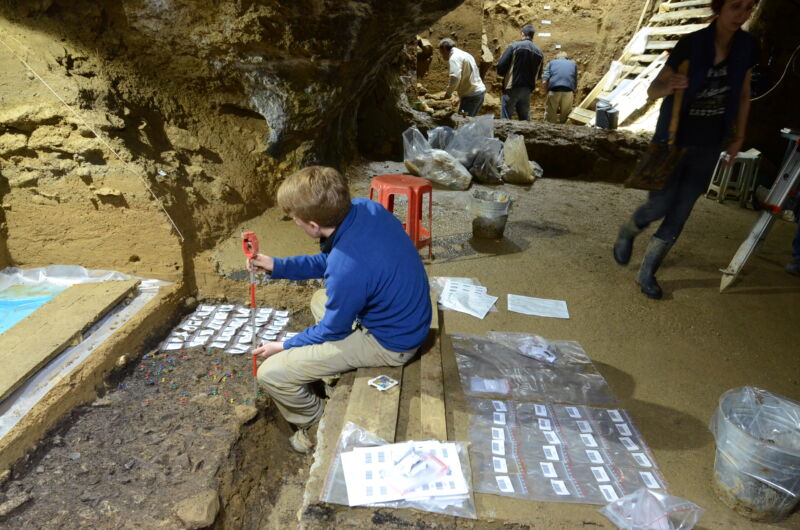
Enlarge (credit: Hajdinjak et al. 2020)
DNA from the earliest Homo sapiens in Europe adds more detail to the story of our species’ expansion into Eurasia—and our complicated 5,000-year relationship with Neanderthals.
The earliest traces of our species in Eurasia are a lower molar and a few fragments of bone from Bacho Kiro Cave in Bulgaria, dating to between 46,000 and 42,000 years old. A recent paper describes DNA from those fossils, as well as a 42,000- to 37,000-year-old jawbone from the Oase site in Romania. The results suggest that the early waves of Homo sapiens in Eurasia included several genetically distinct groups, only some of which eventually passed their genes on to modern people. Most of those early Eurasians mingled with Neanderthals fairly often.
Paleolithic and ready to mingle
Neanderthals had lived in Europe and Asia for at least 350,000 years (and had a complicated population history of their own) when the first groups of Homo sapiens expanded northward from eastern Africa and the Levant. Today, many populations of modern humans still carry tiny fragments of Neanderthal DNA in our genomes as souvenirs from the mingling of two hominin species 45,000 years ago. But we still don’t know much about how often Neanderthals and Homo sapiens got together during the few millennia when they shared a continent.





